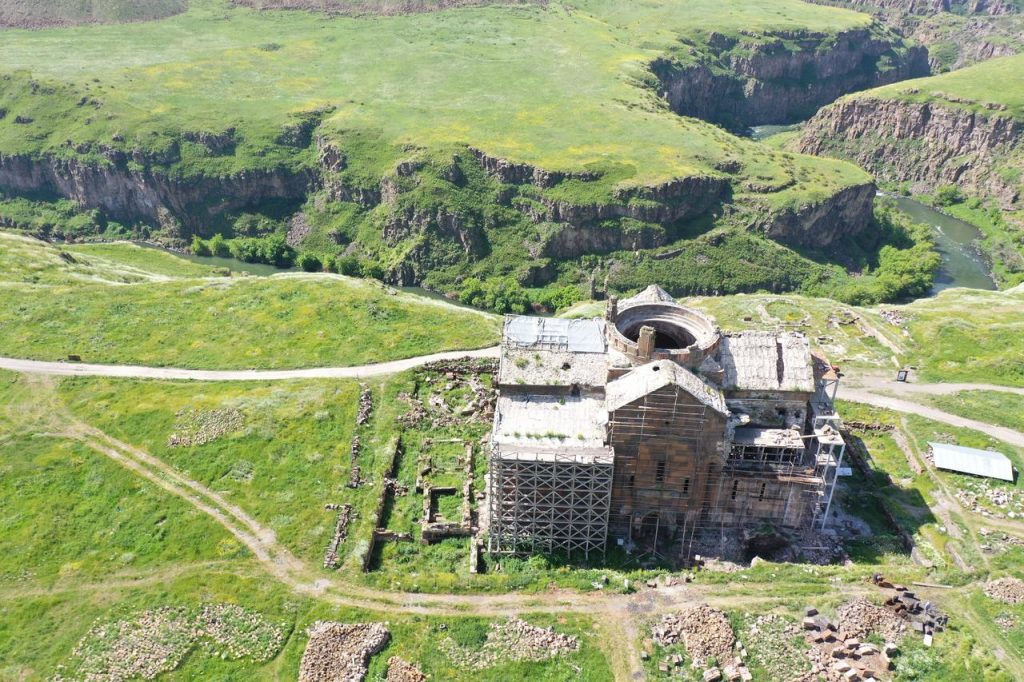Ani Cathedral Restoration Fuels Misinformation Storm, Inflaming Cultural Tensions
A storm of misinformation has erupted on social media regarding the ongoing restoration of the historic Ani Cathedral in Kars, Türkiye, a UNESCO World Heritage site. False claims, initially propagated by social media influencer Mario Nawfal, allege that the Turkish government is converting the cathedral into a mosque, igniting outrage and accusations of an attempt to erase Armenian Christian heritage. These claims, however, starkly contrast with official reports and the historical record, highlighting the dangerous potential of social media to distort facts and exacerbate existing tensions between communities.
The heart of the controversy lies in a fundamental misrepresentation of the restoration project. Nawfal’s posts, shared extensively across various platforms, paint a picture of an active church being repurposed for Islamic worship. This narrative ignores the near-millennium-long history of the structure as the Fethiye Mosque, a status it acquired in 1064 following the Seljuk conquest of Ani. While originally built as an Armenian cathedral between 987 and 1010, it was converted into a mosque by Sultan Alp Arslan, who symbolically replaced the cross on its dome with a golden crescent, marking its transition and establishing it as a symbol of conquest.
Official reporting from Türkiye’s Anadolu Agency paints a dramatically different picture. The restoration, spearheaded by the Turkish Ministry of Culture and Tourism in collaboration with the World Monuments Fund, focuses on preserving the structural integrity of the building within the larger Ani archaeological site. The project is being implemented in three phases, with the second phase nearing completion. Upon full restoration, the Fethiye Mosque will be reopened to visitors as a historical monument within the UNESCO-designated site, showcasing its complex and multi-layered history.
UNESCO’s involvement underscores the dedication to preserving Ani’s diverse historical and cultural fabric. The site, encompassing approximately 100 hectares, boasts structures from various periods, including the Ebu’l Menucehr Mosque, considered the first Turkish mosque in Anatolia, Seljuk cemeteries, and numerous Christian monuments such as the Church of the Redeemer and the Church of Tigran Honents. This rich tapestry of historical structures reflects Ani’s position as a crossroads of cultures and religions, a heritage that the UNESCO designation seeks to protect.
The misinformation campaign surrounding the Ani Cathedral restoration highlights the ease with which false narratives can spread online and manipulate public perception. Nawfal, citing ZartonkMedia as his source, appears to have amplified an already distorted narrative, framing the restoration as an act of cultural aggression against Armenian heritage. This framing ignores the historical context of the site and the collaborative efforts undertaken to preserve its historical integrity, choosing instead to fuel a narrative of erasure and conflict.
The mischaracterization of the restoration work at Ani underscores the critical need for media literacy and responsible information sharing. The spread of false narratives not only misinforms the public but also contributes to the escalation of tensions between communities. In this case, the misinformation campaign has weaponized cultural heritage, transforming a collaborative preservation effort into a symbol of conflict, jeopardizing the very essence of UNESCO’s mission to promote understanding and dialogue through the protection of shared heritage. The incident serves as a potent reminder of the importance of verifying information before sharing it, especially in the online space where misinformation can rapidly proliferate and have far-reaching consequences.


